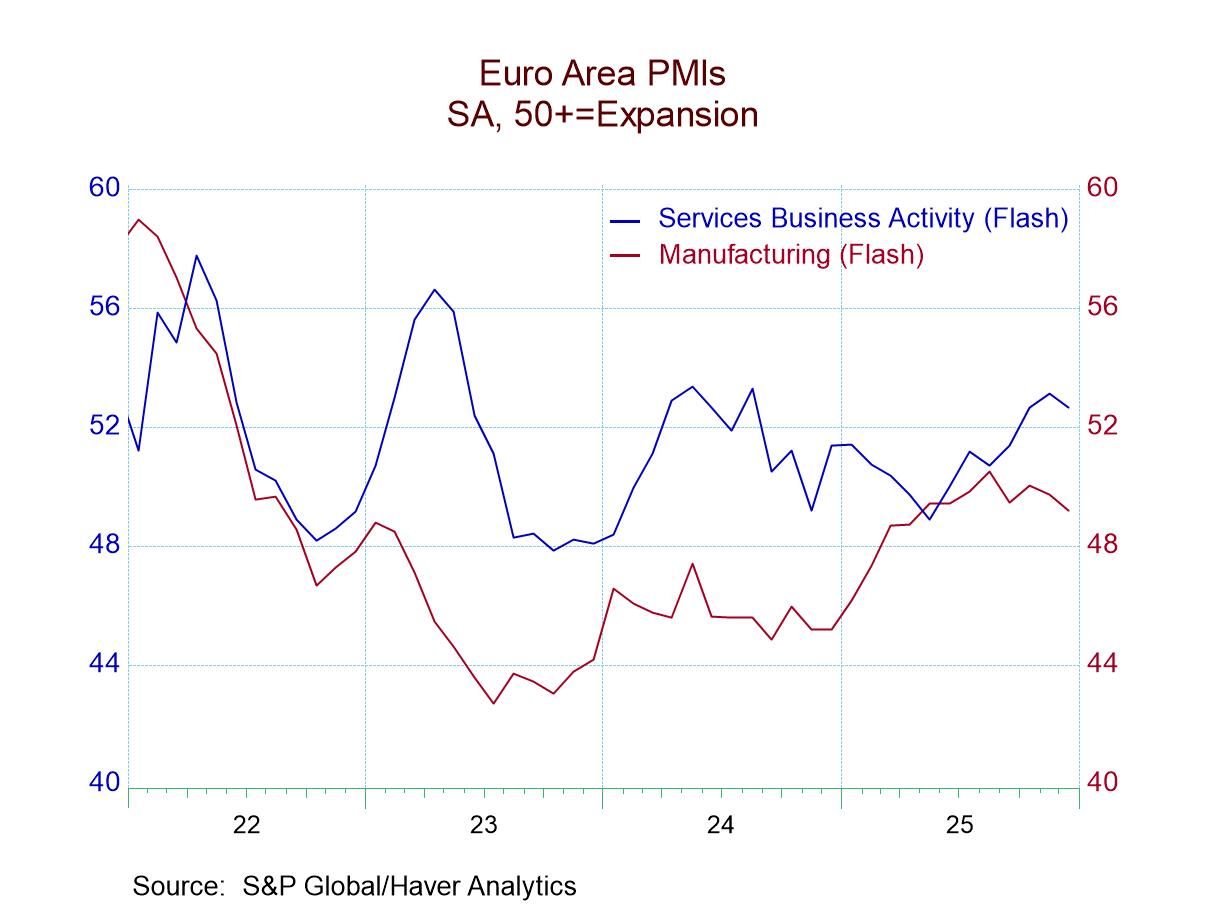FIBER: Industrial Commodity Prices Slip in Latest Four Weeks
by:Tom Moeller
|in:Economy in Brief
Summary
- Lumber & rubber costs have fallen sharply.
- Cotton prices show protracted decline.
- Crude oil prices weaken for three weeks.
- Metals price increase, paced by zinc and tin.


The Industrial Materials Price Index from the Foundation for International Business and Economic Research (FIBER) eased 0.1% (+2.7% y/y) during the four weeks ended May 3, 2024, after exhibiting strength since December. The index remained 20.1 % below the cycle peak in the second week of March 2022. During most of that period of time, U.S. factory output has been little changed.
Prices in the miscellaneous group fell 4.9% during the last four weeks and weakened 0.7% y/y. Plywood prices fell 14.4% and by 4.8% y/y. The cost of natural rubber fell 11.2% in four weeks but rose by nearly one-third y/y.
Textile group prices declined 2.5% (-0.7% y/y) in the latest four weeks but had been rising since their low in the second week of November. Cotton prices decreased 15.7% (-9.3% y/y) in the last four weeks but the cost of burlap rose 1.8% (8.0% y/y) in four weeks.
Prices in the crude oil & benzene group weakened 2.1% (+6.8% y/y) in the last four weeks. The cost of West Texas Intermediate crude oil fell 4.2% in four weeks to $81.28 per barrel, up 11.5% y/y. Prices hit a low of $70.42 in the third week of December. The cost of the petro-chemical benzene, used for making plastics & synthetic fibers, declined 2.7% (+13.4% y/y) in four weeks. Excluding crude oil, the industrial commodity price index rose 0.2% (2.1% y/y) in the latest four-week period.
Offsetting these declines, metals group prices increased 9.8% (7.9% y/y) over the most recent four weeks. Zinc prices rose 17.6% (8.7% y/y) while tin prices improved 15.1% in four weeks, up 20.4% y/y. Copper scrap prices increased 10.4% (15.2% y/y) in the last four weeks and aluminum prices improved 9.6%, rising9.0% y/y. Lead prices improved 8.2% (0.9% y/y) in four weeks while the cost of steel scrap rose 0.3% (-4.2% y/y).
The Foundation for International Business and Economic Research (FIBER) develops economic measurement techniques as applied to business cycles and inflation in the U.S. and other market economies. The commodity price data can be found in Haver's DAILY, WEEKLY, USECON and CMDTY databases.


Tom Moeller
AuthorMore in Author Profile »Prior to joining Haver Analytics in 2000, Mr. Moeller worked as the Economist at Chancellor Capital Management from 1985 to 1999. There, he developed comprehensive economic forecasts and interpreted economic data for equity and fixed income portfolio managers. Also at Chancellor, Mr. Moeller worked as an equity analyst and was responsible for researching and rating companies in the economically sensitive automobile and housing industries for investment in Chancellor’s equity portfolio. Prior to joining Chancellor, Mr. Moeller was an Economist at Citibank from 1979 to 1984. He also analyzed pricing behavior in the metals industry for the Council on Wage and Price Stability in Washington, D.C. In 1999, Mr. Moeller received the award for most accurate forecast from the Forecasters' Club of New York. From 1990 to 1992 he was President of the New York Association for Business Economists. Mr. Moeller earned an M.B.A. in Finance from Fordham University, where he graduated in 1987. He holds a Bachelor of Arts in Economics from George Washington University.






